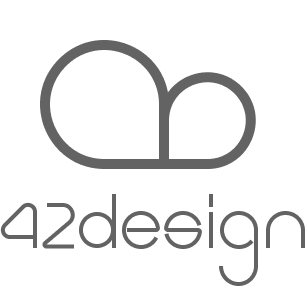Bloom
An interactive tool that aims at supporting the experience of choosing a book.
Project for an interactive mobile system that support the user in the choice of a book.
We must find solutions for positivity, designing the involvement to enrich the interaction at emotional level, to create pleasure not only while reaching the goal, bu also during the journey. The analysis of the choice behaviors and the relationship between the man and the object, allows to extract elements that add value to the searching experience.
Year
2013
Project Reference
Master Thesis in Communication Design at Politecnico di Milano
Reference Lab
SIP Lab – Politecnico di Milano
Project Team
Supervisor: Professor Margherita Pillan
Student: Laura Varisco
A path to the choice of an experience
In the design of Bloom, I aimed at building an experience that is enhanced by the ability and the opportunity of self-knowledge of the individual choice path as well as the own and other’s “book dress”. All this is reinforced by the digital transposition of the idea of contact with the object. The tactile experience is key in human social life and, if the stress is on the path and not on the goal, this path has to be loaded with emotional and experiential qualities.
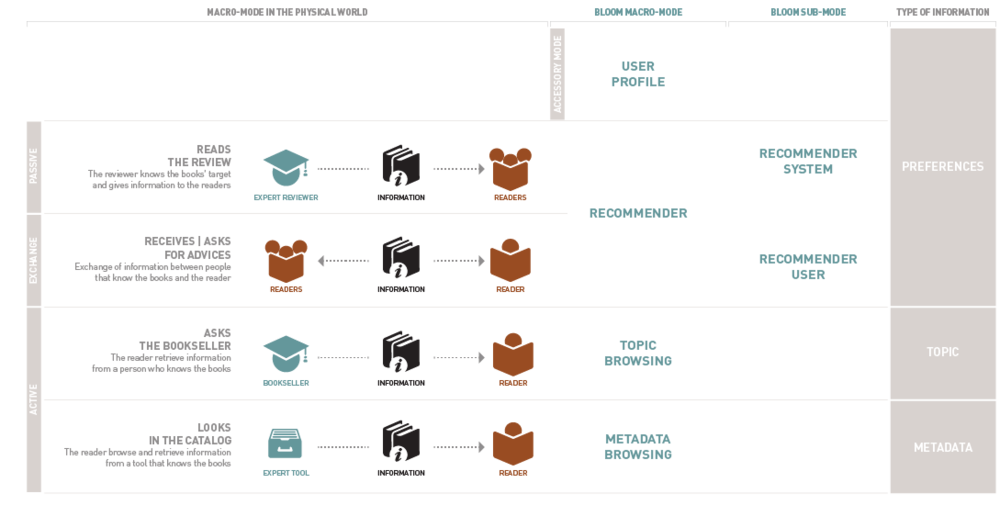
The system modes
The choice mechanisms that emerge in the choice of a book are different from the ones typical of buying goods. The process of the choice of a book imply the building of the experience of the experience (experience of choice of the experience of reading) in which social interaction mechanisms apply.
Starting from the research and analysis on the topic of “choosing a book” in the real world, the image shows the corresponding Bloom’s modes
Profile mode
Considering the results of the research as fundamental elements, the design of the tool to support the choice, constantly guided by the acknowledgment of the double experiential plan, is focused on the support of the experience of choice aiming at enhancing the quality of the interaction. In human brains, the instincts are strictly bonded to emotions. The emotional macro-systems of the research, cure and play, being bonded to positive instincts, contribute to the production of endorphins creating bell-being.
The affective gesture, used to give a physical presence to a digital interaction, links the materiality to a process of acquiring of knowledge of the self and of the other people through both the reading choices and the very action of reading.
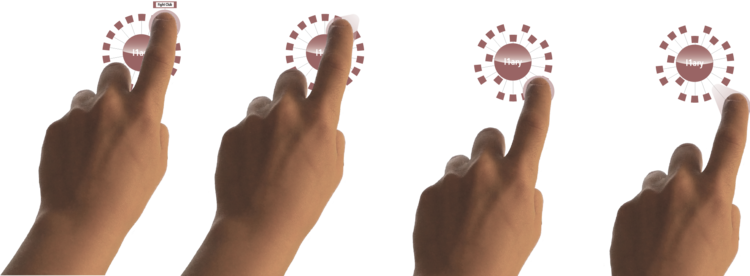
Gestures to rate a book: the closer to the user circle a book is, the higher is the rating
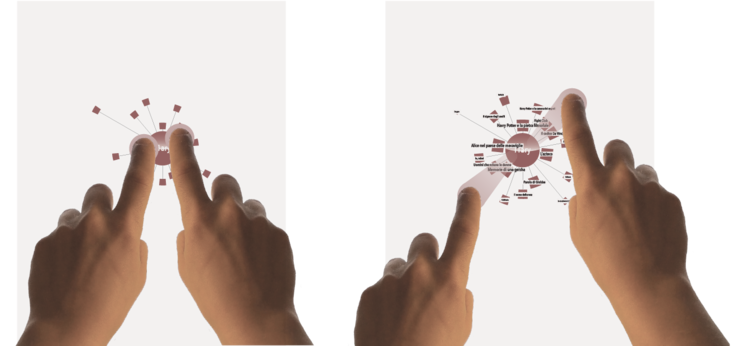
Gesture to ‘look inside’ the user profile to unveil the books
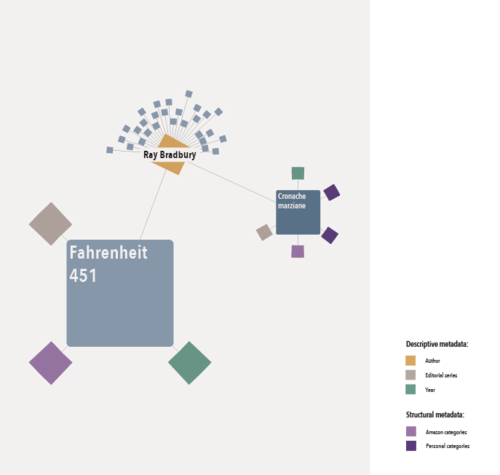
Metadata Browsing Mode: The users can navigate the information creating the path through metadata of the books
Navigating inferences
Topic browsing & metadata browsing
During the search and choice of a book, individuals follow an inferential path traced during an instinctive, intimate and often irrational exploration of various titles. The final choice is made only after the end of this path made by steps and iterations between elements, a road with many forks in front of which decision has to be made. People lose and find again themselves in a journey in which they learn to know, to look inside themselves through own choices and the emotion they feel in front of encountered elements.
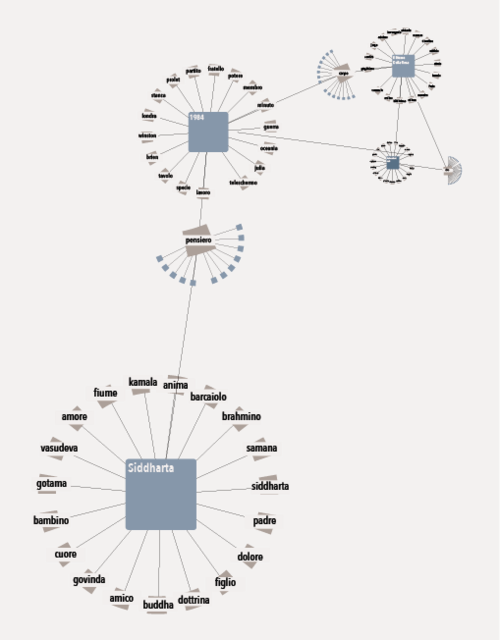
Topic Browsing Mode: The users can look for a specific topic or navigate through them creating their own paths that connect books

Metadata and Topics: protocol for the extraction of the topics of each book from the full text to the 20 most relevant words
Reading recommendations
Recommender system & recommender user
Acknowledging books as elements interlinked through their essence and immaterial structure, books are here also considered as elements of connections between people. This vision focus on the relationship the individual has with books and considers gestural and tactile components as well as the social action deeply rooted in the mechanisms of choice of the book. The choice is here intended as a path of selection and evaluation of a reading experience.
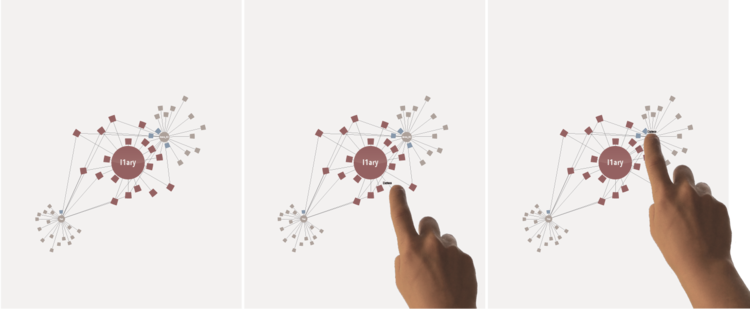
Recommender User Mode: The user can suggests a book to other users by dragging it to their profile
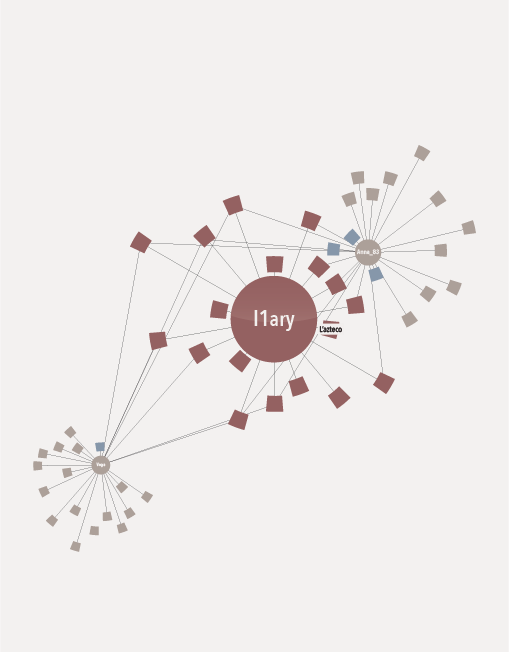
Recommender System Mode: The users are show closer each other according to common books and related ratings. The more similar the rating of a book is between two user, the closer the users are.
